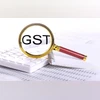The ministerial panel reviewing GST rates will convene on September 25 to discuss potential changes to tax slabs. The Group of Ministers (GoM), led by Bihar’s Deputy Chief Minister Samrat Chaudhary, last met in August and submitted a report to the GST Council earlier this month. Currently, India’s GST structure includes four tax slabs: 5%, 12%, 18%, and 28%. While there are discussions about possibly merging the 12% and 18% slabs, some states, including West Bengal and Karnataka, oppose any changes at this time. The average GST rate has dipped below the necessary revenue neutral rate, prompting the need for these discussions. The GoM consists of members from various states, including Uttar Pradesh, Rajasthan, and Kerala.
The Ministerial Panel on GST Rate Rationalisation is set to meet on September 25 in Goa to discuss potential changes to the Goods and Services Tax (GST) slabs and rates. This meeting of the Group of Ministers (GoM), led by Bihar Deputy Chief Minister Samrat Chaudhary, follows their last session on August 22, where they submitted a status report to the GST Council.
Currently, India’s GST structure features four tax slabs: 5%, 12%, 18%, and 28%. Essential goods are typically exempt from tax or taxed at the lowest rate, while luxury and harmful items face the highest rates, often augmented by an additional cess on top of the 28% rate. Recent discussions have revolved around merging the 12% and 18% slabs, although there has been no official proposal yet.
The average GST rate has dipped below the revenue-neutral rate of 15.3%, sparking renewed discussions on rationalising tax rates. However, some states, including West Bengal and Karnataka, have expressed reluctance to alter the current slabs. West Bengal Finance Minister Chandrima Bhattacharya has stated that no changes should be made, while Karnataka Revenue Minister Krishna Byre Gowda advocates for careful consideration before any disruption to the GST system.
The six-member GoM also includes Finance Ministers from Uttar Pradesh, Rajasthan, and Kerala, all of whom will review the potential impacts of any tax rate changes in the upcoming meeting.
Tags: GST, tax reform, India, finance, government news, tax slabs, Samrat Chaudhary, Group of Ministers, state finance ministers.
-
What is GST rate rationalisation?
GST rate rationalisation means adjusting the tax rates in various slabs to make the tax system simpler and fairer for everyone. -
Why is the GoM discussing GST rates?
The GoM is discussing GST rates to understand if the current tax system is working well and to see if any changes are needed to benefit businesses and consumers. -
What are the current GST slabs?
Currently, there are multiple GST slabs including zero, 5%, 12%, 18%, and 28%. Each slab applies to different goods and services. -
What changes can we expect from the discussion?
We might see some changes in tax rates or which goods and services fall under certain slabs, aimed at making taxes easier to understand and manage. - How will these changes affect me?
If the GST rates are changed, it could mean paying less or more tax on certain products and services, which can affect your overall spending.
)






